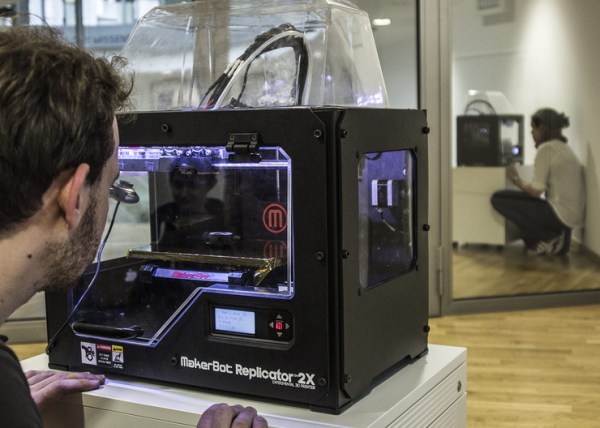Researchers at the Hasso Plattner Institute have created “Scotty,” a so-called teleportation system. While the name is a clear homage to the famous Star Trek character, this is not the Sci-Fi teleporting you may be expecting. The system is composed of two 3D printers (they used a pair of MakerBot Replicators). The “sender” printer has a camera and built-in milling machine. It uses deconstructive scanning – taking the picture of an object’s layer, then grinding that layer down to expose the next layer – and then sends the encrypted data to a “receiver” printer with a RasPi to decrypt the data so that it can immediately print the object. The ultimate idea behind this is that there is only one object at the end of the process.
It’s a disservice describing Scotty as a teleporter. By the researchers’ definition of a teleporter, the lowly fax machine is on par with Scotty – and it doesn’t destroy the original. The researchers claim that this destructive-reconstuctive method preserves the uniqueness of a given object, as long as any sentimentality. We can agree with the unique aspect: the less copies of something means it retains it intrinsic value in the marketplace. The sentimentality – not so much. We’ve all had a moment in our lives where a treasured item of ours, worthless to everyone else, was destroyed. Either we’d get a replacement or someone else would give us one to silence our wailing, but it wasn’t quite the same. If you could clone your dead pet, subconsciously you’d know it’s not going to be the same Fluffy. It’s that exact thing, atoms and all, that has the emotional attachment. Trying to push that psychological perspective onto Scotty’s purpose is irksome.
Continue reading ““Scotty” Is More Hungry 3D-printing Fax Machine Than Teleporter”












